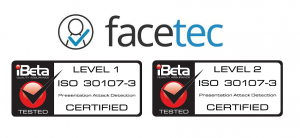Gartner predicts increase in biometric authentication and SaaS-Delivered IAM
8 de fevereiro de 2019Reduced costs and better user experience/customer experience are fuelling the increasing interest in biometric authentication, says Gartner
Written by Steve Cook
By 2022, Gartner, Inc. predicts that 70% of organisations using biometric authentication for workforce access will implement it via smartphone apps, regardless of the endpoint device being used. In 2018, the figure was fewer than 5%.
Gartner said that security and risk management leaders responsible for identity and access management (IAM) and fraud prevention continue to seek approaches for identity corroboration that balance trust and accountability against the total cost of ownership and UX/CX, according to Ant Allan, research vice president at Gartner.
Biometric authentication uses biological or behavioural traits unique to each person and offers better UX/CX and accountability than other common methods.
Implementing this via smartphone apps provides more consistency in UX/CX and is technically simpler than supporting it directly on a variety of different endpoint devices.

Steve Cook | VP Business Development at FaceTec, Inc.
Buyer beware
Gartner warned midsize and large organisations to be cautious as biometric approaches that can be readily supported on any smartphone are vulnerable to presentation attacks or “spoofing” using photos, videos, voice recordings, and so on. According to Gartner, presentation attack detection or “liveness testing” is essential.
By 2022, Gartner predicts that 40% of midsize and large organisations, globally, will use IAM capabilities via software as a service (SaaS) offerings – up 5% in 2018.
SaaS-delivered IAM is often deployed to enhance access management software implementations. The ease of deployment and rapid time to value of SaaS-delivered IAM offerings have proved valuable to organisations that favour SaaS adoption and do not consider the operational management of IAM functionality core to their business.
“Based on our client interactions, most SaaS-delivered IAM purchases are for access management and lightweight identity governance and administration functionality, such as single sign-on. These offerings provide excellent connectivity and include solid access management and password management features,” said Abhyuday Data, associate research principal analyst at Gartner.“B2B and B2C are the most established use cases with matured access management capabilities.”
The significant move by organisations to cloud architectures is also influencing this trend.
“Organisations looking to use SaaS-delivered IAM should first ensure they have established satisfactory and well-supported traditional IAM software stacks. They then need to consider SaaS-delivered IAM once functional needs are met and the organisational benefits are realised,” concluded Data.
Gartner clients can read more in the report, “Predicts 2019: Identity and Access Management.” Privacy and access management issues will be further discussed at the Gartner Identity & Access Management Summit 2019, taking place 7-8 March in London.

FaceTec has reached a new level in iBeta anti-spoofing certification and has become the first and only face biometric company to attain both Level-1 and Level-2 certifications in the Presentation Attack Detection (PAD) test.
Face authentication is becoming the biometric modality of choice. However, spoofing selfies is still a serious issue for the identity and on-boarding industries.
Many so-called liveness technologies, such as blinking, smiling or nodding your head, are no longer secure. See example here.
ID Photos can be easily manipulated into fooling many system checks, and fraudsters are using them to open fake accounts. FaceTec’s ZoOm has been rigorously tested against over 3300 different presentation attacks over 12 days, including high-res photos, video selfies, realistic 3D masks and AI modelling, and it hasn’t failed once.
iBeta is the only National Institute of Standards and Technology (NIST)-accredited lab running presentation attack tests based on the ISO 30107-3 international standard.
In other words, its PAD evaluation is the industry standard to beat, and FaceTec’s achievement in passing Level-2 is a considerable accomplishment for the company. Check out FaceTec’s latest white-paper on PAD testing: There’s a New Sheriff in Town.
FaceTec’s ZoOm uses a patented process that measures perspective distortion from a 3D face and captures 100 times more data than a 2D image alone.
ZoOm has a device component that runs on the device and sends the encrypted biometric data to the server, and a server component that is hosted on your systems to process that biometric data.
ZoOm also supports Android/iOS, Mobile Browser, PWA & PCs with Webcams, and allows both cross-platform and cross-device authentication. See all configuration options.
You are welcome to try out and test FaceTec’s ZoOm free mobile and web demos here: https://www.zoomlogin.com/
If you have an interest in biometrics and identity, then you are very welcome to join the Biometrics for eCommerce LinkedIn group, which now has over 23,000 members.
The first part of this article is courtsey of Andrew Ross at: https://www.information-age.com/gartner-biometric-authentication-123478879/

